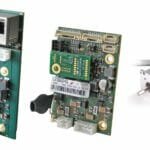Food and beverage production is becoming continuous to keep up with rising demands. To maintain the flow of products and to make sure there are low levels of waste, spoilage or contamination inside a continuous system, automation must be integrated into the production line. Here Darcy Simonis, industry network leader for ABB’s food and beverage segment, showcases how producers can implement continuous production.
Due to tight profit margins, success in the food and beverage industry today requires large capacities with low running costs — making continuous production a perfect fit. This system of production allows manufacturers to better benefit from economies of scale as the cost per item drastically decreases as larger quantities are produced.
Continuous systems have many benefits over more traditional batch processes – the major being consistency. As the product is constantly flowing along the same production line, there are no changes in quality between batches. This constant flow also requires less labor, as there is no equipment downtime because every part of the production line is in continuous use. Even scheduled temporary downtime, which isn’t caused by failure, requires equipment to go through thorough cleaning regardless of how much it has been used.
History of continuous production
The industrial revolution was the birthplace of the concept of continuous production. Powered machines allowed cotton mills to reduce the number of steps needed to turn raw material into finished products. However, without the necessary technology there was only so much that they could automate.
Chemical and oil was the first modern industry to truly use continuous production in the early 19th century. This was only possible thanks to great jumps in process control technology that was developed to tackle industry specific problems. Changing production in this way allowed the industry to vastly improve its capacity while reducing costs. Recent steps to improve process control has seen greater levels of automation developed, lowering the barrier of entry for all industries looking to engage in continuous production.
In the food and beverage industry beverage, soft drink production is the most prominent section to have embraced continuous production. For example, in soft drink production suspension conveyor lines can be used to move bottles through different stages, such as filling in an effort to prevent spillage from the bottle’s main orifice. Making sure that the bottles are all in line when being transferred from the normal belt to the suspension conveyor is a delicate task, requiring multiple pieces of automation.
The bottles must travel on a belt that moves at a variety of speeds to slowly spin the bottles against one of the walls so that they can be picked up by the suspension line. This requires delicate motors and motor control to ensure that the motors are at the correct speed to prevent bottles from being tipped over and clogging the production lines. This method, though complicated, gives outstanding control over the filling process reducing waste.
Continuous control
Control must be achieved on both a micro and a macro scale to fully see the benefits of continuous production. On the more micro production focused level there are, for example, soft starters, motor controls and power quality applications. These will make sure that the critical systems run smoothly and are protected from power surges or sags. To this extent, ABB provides a full suite of automation for implementing continuous production.
Continuous systems benefit larger automated facilities with many pieces of automation. These are, however, also challenging to control on a macro scale because with many different pieces of automation working simultaneously keeping track of all these parts can be a daunting task. They also generate vast quantities of data, that when analyzed can give detailed insight into production that can help improve the system.
For this reason, it is important to have a strong manufacturing operation management (MOM) software in place. MOM software is crucial for proper control over large systems, the software will be able to collate the data from all pieces of automation and analyze it. This data processing allows operation managers gain insight into the overall working and health of their plant.
This insight will not only help the to continuously improve production methods by showing how processes can be streamlined but also create an easy method to begin implementing predictive maintenance. Once set up, it can allow operation managers to understand how to optimize the micro automation to benefit the macro scale of the operation.
Continuous production methods have come a long way since the start of mechanization. The level of control that can now be achieved allows for extremely complex tasks to be carried out without the need of stop-start batch processes. This reduces overhead and makes production more cost-effective. However, at the same time the complexity of modern food and beverage production requires installing quality pieces of automation is paramount to making continuous production the right choice.





